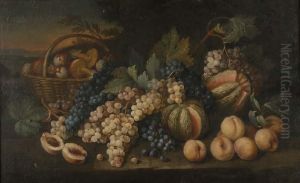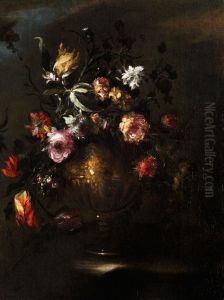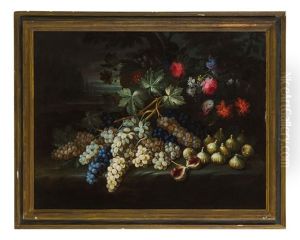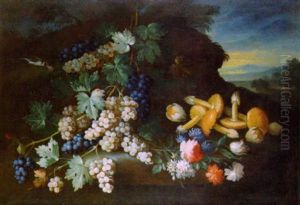Ludovico Caffi Paintings
Ludovico Caffi was an Italian painter known for his historical scenes, landscapes, and vedute, a term referring to highly detailed, large-scale paintings of cityscapes or other vistas. He was born on May 6, 1807, in Longarone, which was then part of the Venetian Republic and is now in the Veneto region of Italy. His early life was marked by the cultural and political shifts of his era, including the fall of the Venetian Republic and the Napoleonic Wars.
Caffi showed an early interest and talent in art and began his artistic training at the Accademia di Belle Arti di Venezia in Venice, where he studied under the neoclassical painter Teodoro Matteini. Caffi's education was steeped in the classical traditions of Italian art, but he was particularly influenced by the 17th-century painter Canaletto and the vedutisti, who were renowned for their detailed cityscapes of Venice.
Throughout his career, Caffi traveled extensively across Europe and the Mediterranean, which greatly influenced his work. He spent significant time in cities like Rome, Naples, and Istanbul, capturing their urban landscapes and daily life with a meticulous eye for detail and atmospheric effects. Caffi's work was characterized by precise draftsmanship, vibrant lighting, and a romantic sensibility that set his vedute apart from the more rigid and formal compositions of his predecessors.
Ludovico Caffi was also active during the period of the Italian Risorgimento, the political and social movement that led to the consolidation of different states of the Italian Peninsula into the single state of Italy in the 19th century. His artwork occasionally reflected the patriotic fervor of the time, with depictions of historical events and contemporary celebrations of Italian unity.
Despite his talent and the quality of his work, Caffi struggled with financial difficulties throughout his life. He never achieved the level of fame or success that some of his contemporaries enjoyed. Nonetheless, his paintings were well-received by critics and are still appreciated today for their beauty and historical value. Ludovico Caffi died on October 14, 1866, in Istanbul, during a cholera epidemic. His legacy lives on in the collections of various Italian museums and galleries, where his works continue to be studied and admired.



